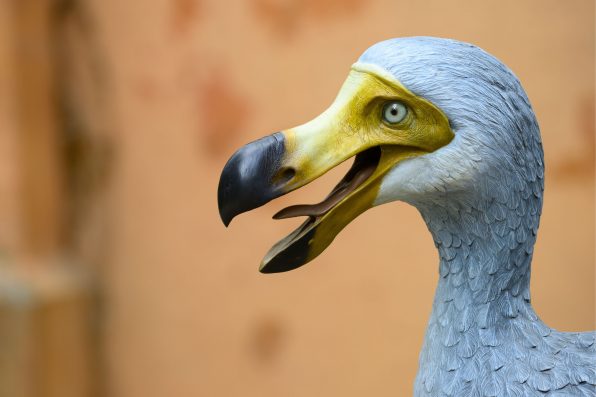Contrary To Pop Culture Portrayals, Dodo Birds Were Actually Fast And Exceptionally Powerful, New Research Suggests

A new study has found that dodos were not the slow and simple-minded creatures often portrayed in popular culture.
In fact, the birds were quite the opposite. Researchers examined early records and descriptions of dodos and found that they were actually fast and powerful.
The dodo (Raphus cucullatus) was the first documented human-caused extinction. When Dutch sailors arrived on Mauritius in 1598, the island was teeming with the flightless birds that stood about three feet tall and weighed around 45 pounds.
But as the Dutch colonized the island, they chopped down trees, introduced predatory invasive species, and hunted down dodos.
By the 1600s, the species was extinct. According to the Oxford University Museum of Natural History (OUMNH), the last known sighting of a dodo was in 1662.
The dodos had lived in isolation for many years before the arrival of the Dutch. They had no known predators, which allowed them to thrive. However, they grew larger and lost their ability to fly. They also were too trusting of humans and other new species.
Scientists were unsure of which dodo species actually existed because records of the bird were inconsistent and unreliable.
So, a team of researchers decided to look into early specimens, reports, and descriptions of the species to clear up the confusion.
They found that many species, such as the Nazarene dodo, were fictional. On the other hand, the solitaire (Pezophaps solitaria) existed. It lived on the Mauritian island of Rodrigues.

alessandrozocc – stock.adobe.com – illustrative purposes only, not the actual bird
“By the 18th and early 19th centuries, the Dodo and Solitaire were considered to be mythological beasts,” Dr. Mark Young, the lead author of the study from the University of Southampton in the United Kingdom, said.
“It was the hard work of Victorian-era scientists who finally proved that the Dodo and Solitaire were not mythological but were giant ground doves.”
In addition, the team managed to identify a “type specimen” for the dodo, a preserved specimen that provides a reference for the species.
The team determined that the dodo and solitaire were both members of the family, which included doves and pigeons. They also figured out what dodos were really like.
“Evidence from bone specimens suggests that the Dodo’s tendon, which closed its toes, was exceptionally powerful, analogous to [those of] climbing and running birds alive today,” said Neil Gostling, a co-author of the study and evolutionary biologist at the University of Southampton. “These creatures were perfectly adapted to their environment.”
Dodo research could help scientists understand how the birds affected its ecosystem and even assist in protecting existing endangered birds.
Currently, the dodo is extinct, but scientists at Colossal Biosciences have been working on bringing the species back to life in the hopes of stabilizing the Mauritius ecosystem.
The paper was published in the Zoological Journal of the Linnean Society.
Sign up for Chip Chick’s newsletter and get stories like this delivered to your inbox.
More About:Animals





